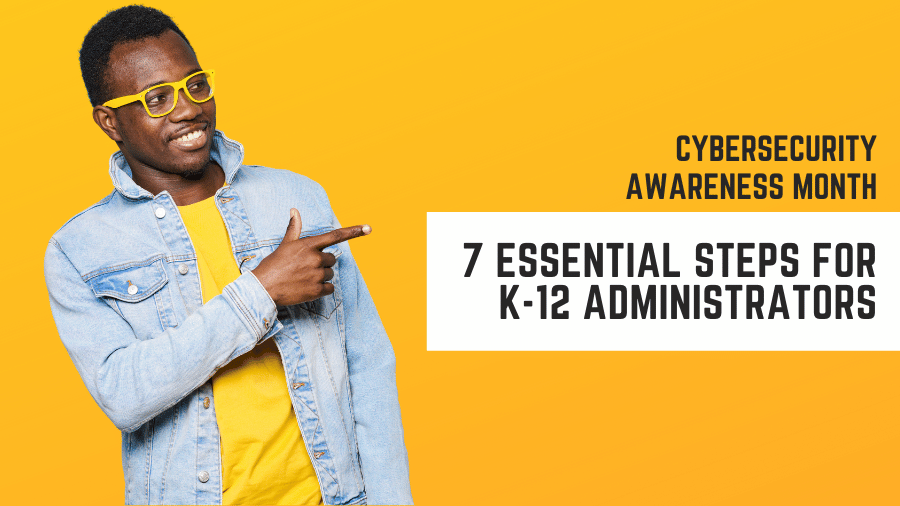Strengthening the Digital Shield: 7 Ways K-12 Schools Can Improve Cybersecurity
In today’s increasingly connected world, cybersecurity is not just an IT concern; it’s a shared responsibility that extends to every corner of society, including our K-12 schools. As we celebrate Cybersecurity Awareness Month, it’s the perfect time to take proactive steps to enhance cybersecurity measures within educational institutions. Let’s explore seven practical ways K-12 schools can improve their cybersecurity defenses.
1. Raise Cybersecurity Awareness
Start by educating everyone in the school community, from students and teachers to parents and administrators, about the importance of cybersecurity. Conduct workshops, seminars, and awareness campaigns to help everyone recognize the risks and understand their role in keeping the school’s digital environment safe.
2. Implement Strong Password Policies
Passwords are often the first line of defense against cyber threats. Encourage the use of strong, unique passwords and consider implementing multi-factor authentication (MFA) wherever possible. Regularly remind staff and students to update their passwords and avoid using easily guessable information.
3. Secure Wi-Fi Networks
Your school’s Wi-Fi network should be protected with strong encryption and a robust security protocol. Avoid using default router settings, and regularly change Wi-Fi passwords to prevent unauthorized access. Additionally, consider setting up a guest network for visitors, separate from the main network used for educational purposes.
4. Regularly Update Software and Systems
Outdated software and operating systems are often vulnerable to cyberattacks. Ensure that all computers, servers, and devices used in the school environment are regularly updated with the latest security patches and updates. Automate this process wherever possible to minimize the risk of oversight.
5. Protect Sensitive Data
K-12 schools handle a vast amount of sensitive data, including student records, financial information, and personal details. Encrypt this data both in transit and at rest, and limit access to authorized personnel only. Implement a data backup strategy to ensure that critical information is not lost in case of a cyber incident.
6. Develop an Incident Response Plan
Prepare for the possibility of a cyber incident by creating a well-defined incident response plan. This plan should outline the steps to take in case of a breach, including how to notify affected parties, contain the incident, and recover from it. Regularly test and update the plan to ensure its effectiveness.
7. Provide Ongoing Cybersecurity Training
Cyber threats are constantly evolving, so it’s essential to provide continuous cybersecurity training for all staff and students. Keep them informed about the latest threats and best practices for staying safe online. Consider establishing a cybersecurity committee or task force within the school to stay vigilant and up-to-date.
In conclusion, cybersecurity is a collective responsibility that begins with awareness and extends to proactive measures and ongoing education. By implementing these seven strategies, K-12 schools can strengthen their cybersecurity defenses and create a safer digital environment for students, teachers, and the entire school community. Let’s make every month Cybersecurity Awareness Month in our schools to ensure a secure and resilient educational experience.

